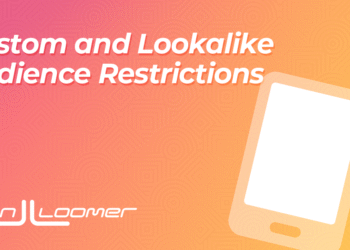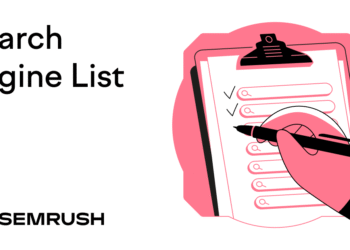Meta advertising is virtually unrecognizable from years past. It’s cliché, but true: You can’t continue using a strategy from 2018 and expect good results.
Whether it’s due to stubbornness or a lack of understanding regarding how things work now, many advertisers cling to old strategies that are both inefficient and ineffective in today’s environment. My goal with this post is to highlight the types of strategies you should abandon, what you should do instead, and why.
You shouldn’t want a strategy spoon-fed to you and applied universally without questioning. It’s important to understand what it is about those old strategies that is outdated and why it would be beneficial to pivot.
Let’s start from the top…
1. Campaign Minimalism
Move away from this…
Move away from indiscriminately adding more active campaigns in the spirit of “control” (which is now an illusion). If your campaign tab in Ads Manager is a long list of variations of the same campaign but with minor tweaks from the original, you’re likely the type of advertiser I’m talking about.
Do this instead…
Prioritize a minimalist approach to campaigns. It may mean running only one at a time for most advertisers. But it doesn’t have to be.
When considering campaign construction, spend more time consolidating than fragmenting into new campaigns. While there are always exceptions when another campaign is necessary, your goal should be to avoid it.
Why you should change…
First and foremost, consolidation is more efficient. Fewer moving parts means fewer things to worry about. More of your budget focused on a single goal, rather than splitting up a finite budget across campaigns.
Just as importantly, many of the reasons to create new campaigns (I’ll cover them more deeply below, as it relates to ad sets, conversion optimization, and creative), are no longer relevant. In the past, we created more campaigns to assert control over testing. But much of that control is long gone.
Watering down your budget with unnecessary campaigns makes it harder to see what’s actually working. Small sample size results are misleading, and you’re likely to make bad decisions due to correlation rather than causation.
2. Conversion Focus
Move away from this…
Move away from creating traffic or engagement campaigns. Maybe you think you need to “seed the funnel” or you can trick the algorithm to send you cheap traffic or engagement that may end up converting.
Performance goals that maximize the number of link clicks, landing page views, ThruPlay views, post engagement, and other top-of-funnel actions are almost always a waste of money.
Do this instead…
Whenever possible, use a performance goal that maximizes the number or value of conversions. This is where you’re most likely to get valuable results.
In most cases, this would mean prioritizing a mix of sales and leads (one or both). The type of business you run will determine whether leads are desirable or necessary. And your budget will impact whether you can go straight for the purchase.
While you should prioritize conversions, it doesn’t mean there is no place for performance goals for other actions. But doing so is mostly a privilege of those with bigger budgets. If you manage a modest budget and struggle to exit the learning phase with conversion-focused campaigns, the last thing you want to do is water down your budget with engagement campaigns.
Why you should change…
For all of Meta’s advancements over the years, one area where the system remains lacking is when optimizing for actions other than conversions.
Because the algorithm is literal, its only focus is getting you the action that you want. It’s not necessarily to get a sale, quality lead, or engagement from someone who might eventually buy from you.
If your performance goal is to maximize link clicks, the algorithm’s only goal is to get you more clicks. It doesn’t matter where those clicks come from. The algorithm will exploit every possible weakness (age, placement, bots) to get you the most clicks possible. Meta doesn’t care about quality because you didn’t specify that you care about it.
When it comes to planning your budget, prioritize it like this:
- Value of conversions (purchase)
- Number of conversions (purchase)
- Number of conversions (leads)
- Everything else
Maximizing the value of conversions isn’t for everyone since you need both the volume and value variance to qualify. Focusing on the number of purchases would be the next best place for most advertisers to spend their money. But that also assumes you can get the value and return to make it worthwhile.
A lead-adjacent conversion is a nice happy medium that should apply to virtually any business. While lead optimization has its own quality pitfalls and requires a deeper understanding of the funnel and post-lead process, it remains far superior to any top-of-funnel optimization.
3. Limited Targeting Inputs
Move away from this…
Move away from obsessing over targeting inputs. There was a time when an advertiser’s targeting could make or break a campaign. Those days are long gone.
Spend far less time worrying about things like interests, behaviors, lookalike audiences, custom audiences, and even demographic details like age and gender.
Do this instead…
Leverage algorithmic targeting. You can use Meta’s audience suggestions, but don’t view them as being particularly necessary or impactful. And surely don’t create separate ad sets based on that targeting.
Why you should change…
This one gets the most pushback, but my recommendation is based more on facts than performance. People assume I’m coming at this as an advocate for the power of algorithmic targeting. But the reality is that the effectiveness of algorithmic targeting is irrelevant. It can rarely be avoided.
Assuming you prioritize performance goals that maximize the number or value of conversions, your detailed targeting and lookalike audience inputs are only used as suggestions. You cannot turn this off to restrict the audience to those people.
And even if you use performance goals that maximize the number of landing page views or link clicks, your detailed targeting inputs are only used as suggestions. Whether they make any difference at all in these cases is debatable.
Not many years ago, I was a fierce advocate of remarketing. I’d restrict targeting to general remarketing audiences like my website visitors, email list, and engagement with my page. I did this because I thought Meta needed that restriction — and it’s possible this was true at one time.
But if you don’t provide any targeting inputs at all, Meta will prioritize remarketing audiences. Especially if you optimize for conversions, Meta knows that the people closest to you are most likely to act. You can prove this happens with Audience Segments and sales campaigns. And even if you find “good results” with remarketing, it ignores the significant flaws.
So, there’s rarely a need to restrict your audience to remarketing now. It happens naturally anyway. And I’d be willing to bet that a reasonable percentage of advertisers who continue to swear by remarketing aren’t actually restricting their audiences to those people. They’re providing custom audiences as suggestions.
Should you restrict by age or gender? Don’t assume it’s necessary. In theory, restricting by demographics can do more harm than good. Don’t do this to reflect your ideal customer since Meta will already know that information. Do it to solve a problem, because Meta spends money on a low-value demographic that generates cheap results (usually leads).
4. Advantage+ Placements
Move away from this…
Move away from manually editing placements to “optimize” performance because some placements are more effective than others. Even when advertisers did this 12 years ago with the right hand column, I begged them to stop.
Don’t remove placements and don’t create separate ad sets based on different placement groups.
Do this instead…
Assuming you’re prioritizing conversions, you should use Advantage+ Placements and allow Meta to optimally distribute your ads to any placement to get you the most results.
You should be sure that your ad is optimized for each placement based on format, aspect ratio, and text limitations, but you should make use of every placement available to you.
Why you should change…
Removing a placement because it has a low conversion rate will almost always drive up costs and hurt results. The most desirable placements are also the most competitive, which means they’ll be the most expensive.
By giving Meta the freedom to use any placement, the algorithm will balance volume (cheap impressions) with effectiveness (expensive impressions) to get you the best results. Just because a placement doesn’t get credit for a conversion doesn’t mean that it didn’t contribute.
You should only turn off placements to solve a problem where Meta is exploiting weaknesses in it to get you cheap results. But this is most likely to happen when using performance goals that maximize the number of link clicks, landing page views, ThruPlay Views, or even Reach.
5. Ad Set Minimalism
Move away from this…
Move away from feeling the need to create multiple ad sets in a single campaign. In most cases, these extra ad sets were used for targeting segmentation purposes. You do not need to create different ad sets by broad, lookalike audiences, detailed targeting, demographic variances, or remarketing.
Do this instead…
Once again, aim to consolidate. In most cases, you can get away with a single ad set in a campaign. There are exceptions, but your goal should be to prioritize simplicity where possible. If you do use multiple ad sets, also turn on Advantage+ Campaign Budget so that your budget is distributed optimally between ad sets.
Fewer ad sets also means that your budget is spread out across fewer assets. If you struggle to exit the learning phase and get optimal results while intentionally breaking up your budget across several ad sets, you are the source of your problem.
Why you should change…
Things don’t work today like they did a few years ago. If you’re creating separate ad sets by targeting groups, you may be surprised by what is actually happening.
As explained earlier, most of your targeting inputs are used as suggestions now, rather than as tight constraints, when optimizing for conversions. Because of that, the algorithm is going to reach the people who are most likely to perform the action you want, even if they don’t match those suggestions.
When you have multiple ad sets in the same campaign and Meta has the ability to reach all of the same people in any of those ad sets, you are creating a system that is inefficient and results in an attempt to compete against yourself in the ad auction (Auction Overlap). Even if you’re able to explicitly separate audiences, it leads to unnecessary audience fragmentation.
6. Creative Diversification
Move away from this…
Move away from all of our old creative testing strategies. They’re outdated.
Don’t obsess over finding the winning combination of ad copy and creative. Don’t create multiple ad sets for individual ads for testing purposes. Don’t turn ads off that you believe are underperforming.
Do this instead…
This is likely the biggest area of recent transformation when it comes to Meta ads strategy. And it’s not easy to get many long-time advertisers to adapt.
Meta now prefers “creative diversification” by format, angle, approach, and text. Utilize five primary text and headline options for each ad. Create very different versions of your ads within a single ad set.
It wasn’t long ago that Meta said that there was no benefit to having more than six ads in an ad set. That is no longer the case. Meta removed this recommendation, and the old rule book is no longer relevant.
Experiment with more ads than you’ve used before in a single ad set. Don’t assume that you should limit the number of ads based on your budget.
Why you should change…
This is all thanks to Meta’s new Andromeda system for ad retrieval. Meta’s old hardware was unable to handle the scale of the many new versions of ads that are generated thanks to Advantage+ Creative and AI-generated enhancements alone. Andromeda was created to handle the scale.
Understand that finding the “winning combination” of ad creative is no longer relevant under this new system. Each ad can have hundreds, if not thousands, of variations due to text variations, enhancements, and versions by placement.
Andromeda’s goal isn’t to find a winner at all. It’s to find the right ad for the right person. And because of that, you could have many “winning” combinations of ad copy and creative, not just one. It all depends on the person.
The Core Principles
In the end, the modern approach to Meta advertising is more focused and streamlined.
- Limit the number of campaigns
- Prioritize conversions
- Embrace algorithmic targeting
- Avoid removing placements
- Limit the number of ad sets
Everything in the campaign and ad set is very simple, particularly when optimizing for conversions. Prioritize the defaults, and rarely make major diversions from the basic settings.
Sounds simple? Well, it is. Until you get to the ads.
In the new approach, you should spend the vast majority of your time on the ads. And this is where the truly successful advertisers will separate themselves from the rest.
It’s not necessarily about having the best, most polished images and videos. It’s about understanding your ideal customer, their pain points, and how your product can make their life easier.
It’s understanding that if you aren’t getting the results you want, it’s not because of your campaign construction or targeting or placements. The solution is found in the ad copy, creative, and landing page. It’s found in a better offer that resonates with your target audience.
And once you embrace that, you’ll be way ahead of the vast majority of today’s advertisers who will struggle to keep up.
Your Turn
How has your approach to Meta advertising evolved recently?
Let me know in the comments below!
















